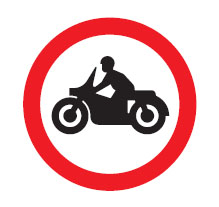Here’s a thing about science: people change their mind as new evidence emerges. Now I’ve read the Science of Being Seen, and – because I decided hi-viz didn’t work – I wear black leathers.
Maybe I made the wrong choice after all. Horse shared a systematic review by TRL, which he co-authored; I think the conclusion inferred that further research on hi-viz wasn’t warranted because there’s sufficient evidence of benefit. (Yes, I know there are caveats about this, and it’s nuanced.) I'm sure Horse will correct me
Then there’s saccadic masking. It transpires that saccades don’t hamper car drivers from seeing bikers: research on visual search has shown this. (It’s peer-reviewed science, but I’ve lost the reference, unfortunately.)
Enter research about cyclists. I know, they wear lycra and don’t go ‘Vroom!’ But there’s a randomised controlled trial (RCT) about hi-viz. In scienceland, an RCT is a type of study that’s a Big Deal. It’s the most rigorous type of trial, considered the highest level of evidence (excepting a meta-analysis of several RCTs). And this RCT investigated whether a hi-viz jacket affected the number of accidents, not merely the effect on 'detectability'. So, even if I don’t want to like the findings, I think it’s worth reading with an open mind: The effect of a yellow bicycle jacket on cyclist accidents: a randomised controlled trial

